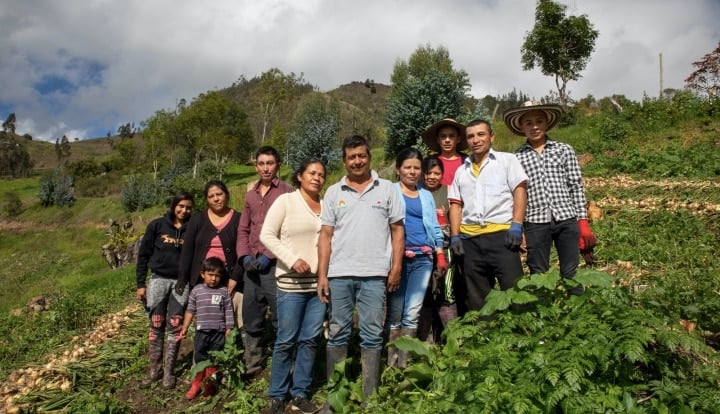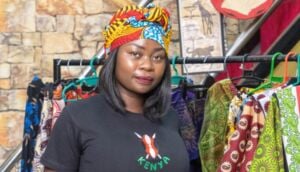Approximately 78 percent of the world’s poor, or 800 million people , live in rural areas and rely on agriculture for a living. Most of those smallholder farmers are operating at extremely low levels of productivity and are excluded from formal markets. Meanwhile, there is a growing demand for locally-sourced food, particularly in growing urban hubs in developing countries. While there is often willingness by formal market buyers, such as large food producers, retailers and fast food chains to purchase crops from smallholder farmers, it is difficult and risky for them to procure directly from such fragmented and irregular sources.
Fortunately, over the past decade, we have witnessed increasing investment in innovative models that act as benevolent intermediaries connecting smallholder farmers to such businesses. These models have the potential to transform small-scale agriculture in developing countries. The most successful models utilize philanthropy to first build farmer capacity, combined with commercial models (often social enterprises) for market linkages, and are then supported by long-term sourcing commitments from corporate businesses.
At Acceso , we have been building social agribusinesses that formalize and manage entire value chains from small farmers specifically into large supermarket chains, international restaurant chains, and food processors. These agribusinesses typically double and often triple the income of participating farmers while creating robust local food systems. Based on our partnerships with many of those buyers in Latin America, the Caribbean, Asia, and Africa, and our experience managing corporate supply chains throughout the Covid-19 pandemic, we have the following recommendations for businesses embarking on sustainable sourcing projects in developing countries :
- Ensure that sustainable sourcing commitments and associated long-term business rationales have buy-in at the start, from all levels within your company. Sustainability, partnerships, or CSR teams often drive such strategies, but they may not hold final decision-making authority for procurement. Top down strategies only work if local managers responsible for day-to-day pricing and quality control functions are brought in early on for their input on viability, projections, and success measures. Importantly, local procurement teams should also be responsible for developing upfront contingency strategies on how to supplement smallholder supply in the event of early stage disruptions. This ensures long-term sustainability goals are not abandoned due to inevitable bumps in the road. Sustainable sourcing activities are most successful when local teams have ownership over the projects and project goals are embedded in their compensation-linked performance targets.
- Partnering with local social enterprises, non-profit programs, or other similar “intermediary” organizations is an effective solution. These intermediaries provide farmers with technical assistance to improve yields and quality to match national/international purchasing standards and reduce the risk for corporate off-takers. They are also usually well-equipped to bridge not only operational and commercial gaps, but also critical cultural gaps between corporates and low-income communities. Look for partners who have expertise to implement full traceability at the farmer level in a way that creates commercial benefit and allows ongoing tracking of social outcomes. Partnerships need to be long-term as the path to increasing smallholder production and cementing robust, sustainable, market linkages is usually a five to ten-year journey.
- Clearly communicate the price, quantity, and quality required upfront to all partners in sustainable sourcing commitments . Open book models work better than closed-door negotiations. Working with low-income populations involves low margins, particularly at the beginning, so partners need to work out first whether they can pass on sufficient margins to farmers in a way that increases their incomes. Every time a new farmer is brought into the sourcing system, a financial loss is incurred, and how these losses will be sustained need to be agreed upfront. While overall pricing should always be market-driven, corporates need to have flexibility on commercial terms while smallholder supply is first being built, or when external factors, such as climatic events, civil unrest, or more unexpectedly, Covid-19, arise. For example, more flexible and prompt payment terms to intermediary organizations in early years enables farmers to be paid promptly and adds incentive for farmers to migrate more quickly to formal markets.
- In defining impact or sustainability, include clear metrics that measure the true “P&L” impact for participating farmers. It is not enough to simply trade with smallholders if this does not provide real income uplift through better pricing, volume increases, reduced costs, or cash flow advantages, e.g. credit. Including farmer numbers in corporate annual reports without commenting on farmers’ bottom-line impact is effectively greenwashing and will be met with skepticism and scrutiny over time. All sourcing projects must start with a thorough benchmarking of farmers’ baseline incomes. An analysis of economic and social issues is recommended also.
Sustainable sourcing from large businesses holds great promise for small-scale agriculture and can provide higher, more certain incomes for farmers while reducing risks they often face when trading with less benevolent informal market actors. Meanwhile, businesses can benefit from shorter, more responsive, and transparent supply chains while supporting rural development. We have seen during Covid-19 the importance of building and strengthening value chains for the long term so they can withstand even the most exceptional external shocks and extreme market volatility. During the pandemic, these supply chains have provided critically needed incomes stabilizing smallholder farming communities whilst providing essential food to urban centers, despite regional trade restrictions and fluctuations. Heading towards Business Fights Poverty Online 2020 and looking ahead to the 2021 Food Systems Summit , we look forward to ongoing engagement with businesses and following their commitments to building stronger and more equitable supply chains.
Editor’s Note:
This article is part of Business Fights Poverty NYC Online 2020, a one-week, online conference (21 to 25 September) that builds on our recent online conference Business Fights Poverty Online 2020 (13 to 17 July) to drive forward connection, conversations and collaboration around how we rebuild better – how together we create an equitable and resilient world. The week consists of inspiring and engaging content, live events, peer networking and community-led learning. The week also builds on our Business and COVID-19 Response with Harvard Kennedy School Corporate Responsibility Initiative, and supported by DFID and a number of our corporate partners.
Each day, we will focus on a specific theme: Imagining the Future We Want (Monday); Creating an Equitable World (Tuesday); Helping People Survive and Thrive (Wednesday); Building Resilient Livelihoods (Thursday); Shaping System-Level Partnerships (Friday).
You can register here to join us at the online event.










